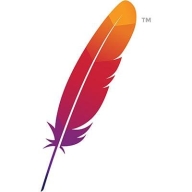

Apache Spark and Azure Stream Analytics are in the realm of big data processing. Apache Spark leads with its robust in-memory computing and support for massive-scale data handling when considering pricing and operational cost benefits.
Features: Apache Spark provides large-scale data processing with low latency and commodity hardware. It offers Spark Streaming for real-time data processing, Spark SQL for cost-effective analysis of vast datasets, and MLlib for machine learning. Azure Stream Analytics integrates seamlessly with Microsoft's cloud for IoT interactions and real-time analytics, benefiting from Azure's storage solutions.
Room for Improvement: Apache Spark should enhance stability, scalability, and user interface. It requires better real-time querying and machine learning support. Azure Stream Analytics needs improved usability and customization, especially in real-time data joins and broader cross-cloud integration.
Ease of Deployment and Customer Service: Apache Spark's on-premise deployment allows flexibility but with community-reliant support. Azure Stream Analytics enjoys Microsoft's reliable cloud deployment with strong customer service, offering easy integration within its ecosystem.
Pricing and ROI: Being open-source, Apache Spark lowers licensing costs but entails hardware expenses. Azure Stream Analytics has a pay-as-you-go model, potentially expensive for high-volume use yet advantageous through Azure integration. Spark delivers high ROI via reduced operational costs and efficient processing, while Azure balances higher initial expenses with its ease of use and integration.
There is a big communication gap due to lack of understanding of local scenarios and language barriers.
They've managed to answer all my questions and provide help in a timely manner.
The support on critical issues depends on the level of subscription that you have with Microsoft itself.
Maintenance requires a couple of people, however, it's not a full-time endeavor.
This is crucial for applications demanding constant monitoring, such as healthcare or financial services.
Azure Stream Analytics is scalable, and I would rate it seven out of ten.
Apache Spark resolves many problems in the MapReduce solution and Hadoop, such as the inability to run effective Python or machine learning algorithms.
They require significant effort and fine-tuning to function effectively.
For example, Azure Stream Analytics processes more data every second, which is why it's recommended for real-time streaming.
A cost comparison between products is also not straightforward.
There's setup time required to get it integrated with different services such as Power BI, so it's not a straight out-of-the-box configuration.
Azure Stream Analytics currently allows some degree of code writing, which could be simplified with low-code or no-code platforms to enhance performance.
Choosing between pay-as-you-go or enterprise models can affect pricing, and depending on data volume, charges might increase substantially.
From my point of view, it should be cheaper now, considering the years since its release.
We sell the data analytics value and operational value to customers, focusing on productivity and efficiency from the cloud.
Not all solutions can make this data fast enough to be used, except for solutions such as Apache Spark Structured Streaming.
It's very accurate and uses existing technologies in terms of writing queries, utilizing standard query languages such as SQL, Spark, and others to provide information.
Azure Stream Analytics reads from any real-time stream; it's designed for processing millions of records every millisecond.
It is quite easy for my technicians to understand, and the learning curve is not steep.
| Product | Market Share (%) |
|---|---|
| Apache Spark | 17.1% |
| Cloudera Distribution for Hadoop | 19.1% |
| HPE Data Fabric | 14.6% |
| Other | 49.199999999999996% |
| Product | Market Share (%) |
|---|---|
| Azure Stream Analytics | 7.2% |
| Apache Flink | 14.4% |
| Databricks | 11.8% |
| Other | 66.6% |


| Company Size | Count |
|---|---|
| Small Business | 27 |
| Midsize Enterprise | 15 |
| Large Enterprise | 32 |
| Company Size | Count |
|---|---|
| Small Business | 8 |
| Midsize Enterprise | 3 |
| Large Enterprise | 18 |
Spark provides programmers with an application programming interface centered on a data structure called the resilient distributed dataset (RDD), a read-only multiset of data items distributed over a cluster of machines, that is maintained in a fault-tolerant way. It was developed in response to limitations in the MapReduce cluster computing paradigm, which forces a particular linear dataflowstructure on distributed programs: MapReduce programs read input data from disk, map a function across the data, reduce the results of the map, and store reduction results on disk. Spark's RDDs function as a working set for distributed programs that offers a (deliberately) restricted form of distributed shared memory
Azure Stream Analytics is a robust real-time analytics service that has been designed for critical business workloads. Users are able to build an end-to-end serverless streaming pipeline in minutes. Utilizing SQL, users are able to go from zero to production with a few clicks, all easily extensible with unique code and automatic machine learning abilities for the most advanced scenarios.
Azure Stream Analytics has the ability to analyze and accurately process exorbitant volumes of high-speed streaming data from numerous sources at the same time. Patterns and scenarios are quickly identified and information is gathered from various input sources, such as social media feeds, applications, clickstreams, sensors, and devices. These patterns can then be implemented to trigger actions and launch workflows, such as feeding data to a reporting tool, storing data for later use, or creating alerts. Azure Stream Analytics is also offered on Azure IoT Edge runtime, so the data can be processed on IoT devices.
Top Benefits
Reviews from Real Users
“Azure Stream Analytics is something that you can use to test out streaming scenarios very quickly in the general sense and it is useful for IoT scenarios. If I was to do a project with IoT and I needed a streaming solution, Azure Stream Analytics would be a top choice. The most valuable features of Azure Stream Analytics are the ease of provisioning and the interface is not terribly complex.” - Olubisi A., Team Lead at a tech services company.
“It's used primarily for data and mining - everything from the telemetry data side of things. It's great for streaming and makes everything easy to handle. The streaming from the IoT hub and the messaging are aspects I like a lot.” - Sudhendra U., Technical Architect at Infosys
We monitor all Hadoop reviews to prevent fraudulent reviews and keep review quality high. We do not post reviews by company employees or direct competitors. We validate each review for authenticity via cross-reference with LinkedIn, and personal follow-up with the reviewer when necessary.